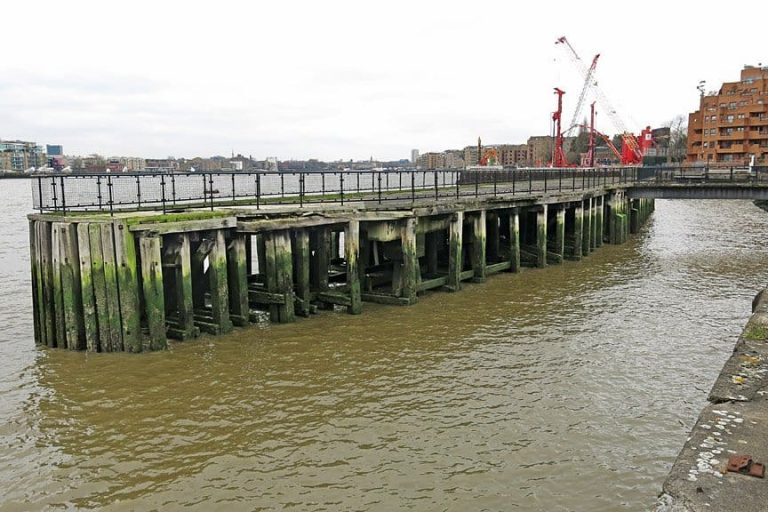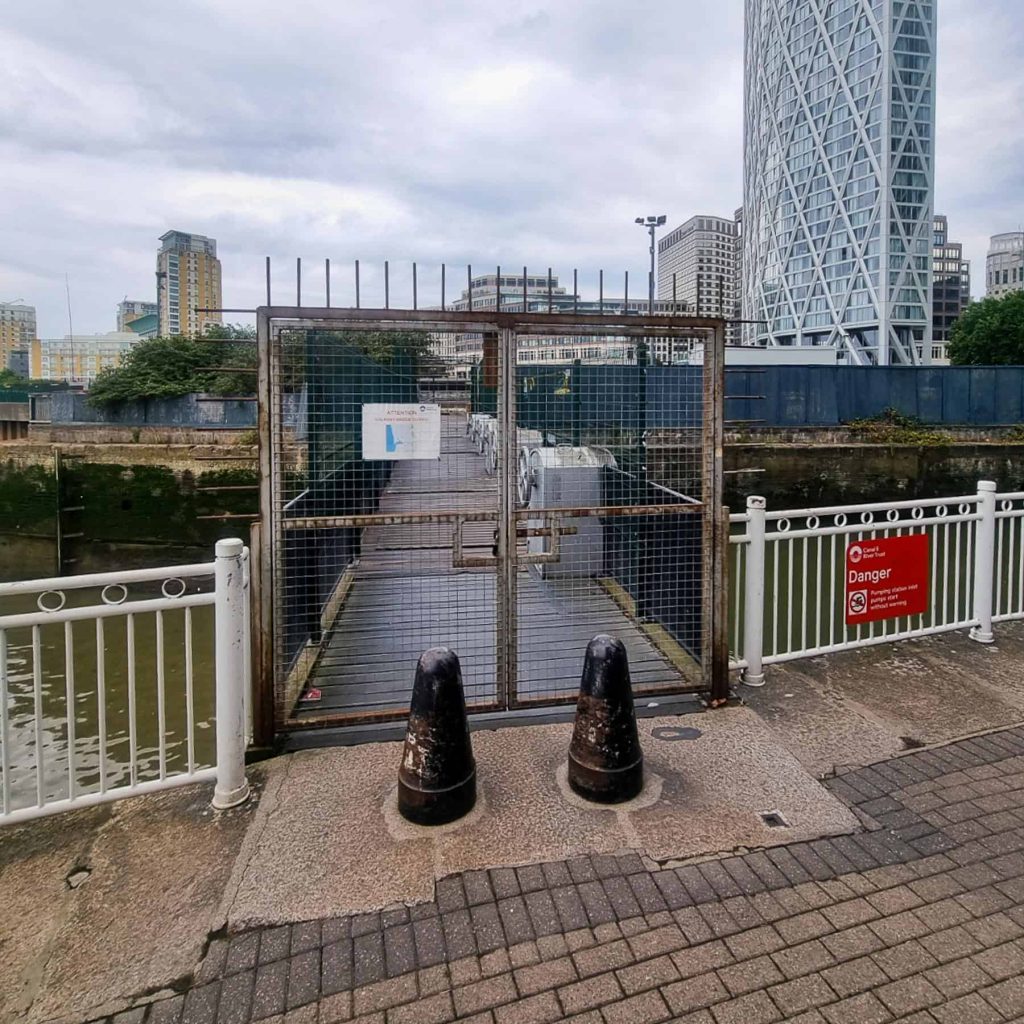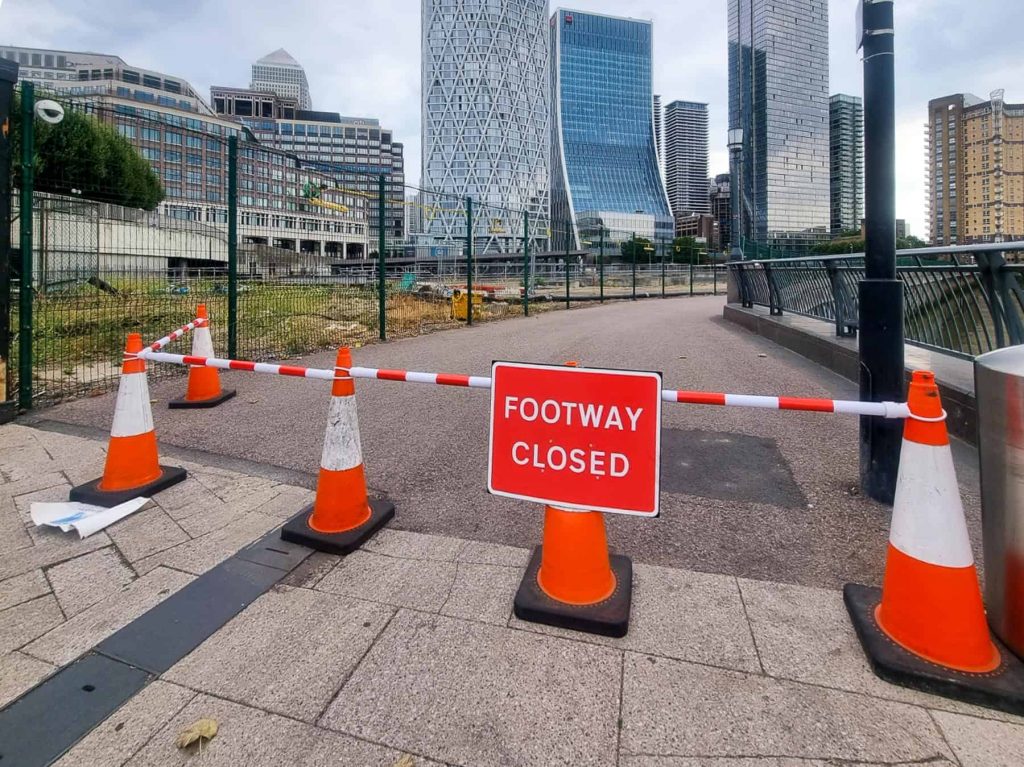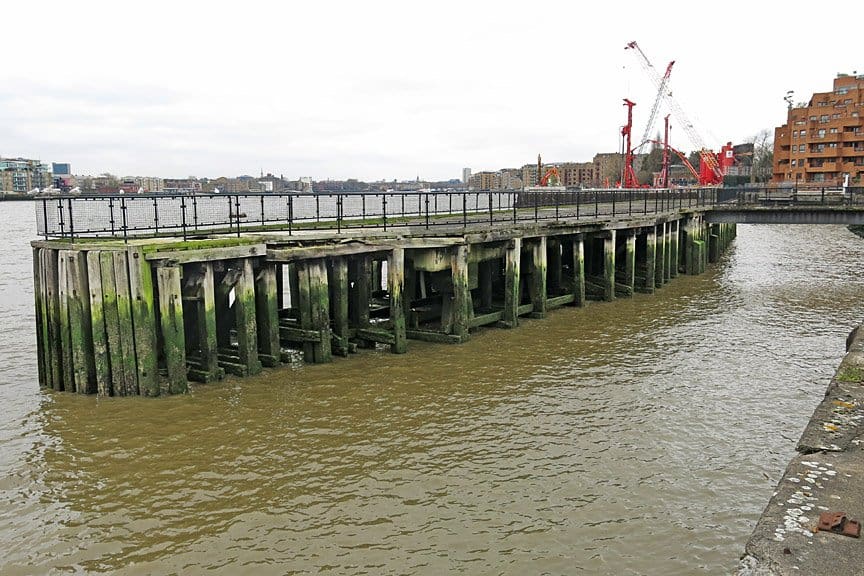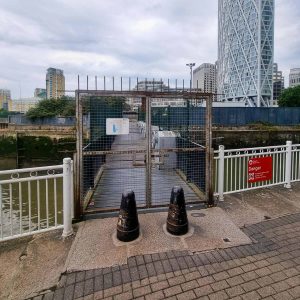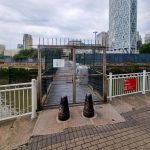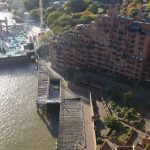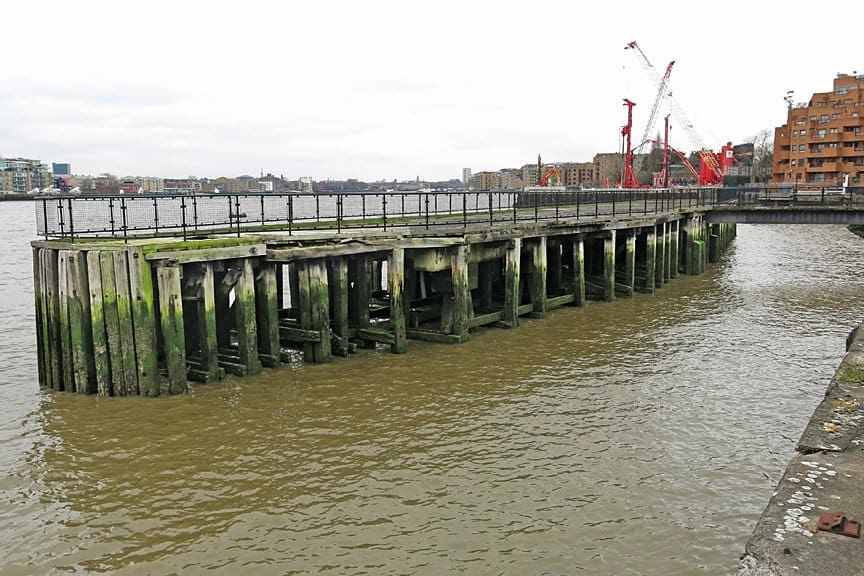
Free Trade Wharf have applied for a demolition order for Charrington Jetty on the Thames Path just to the east of King Edwards Park.
Crumbling concrete, rotten timbers
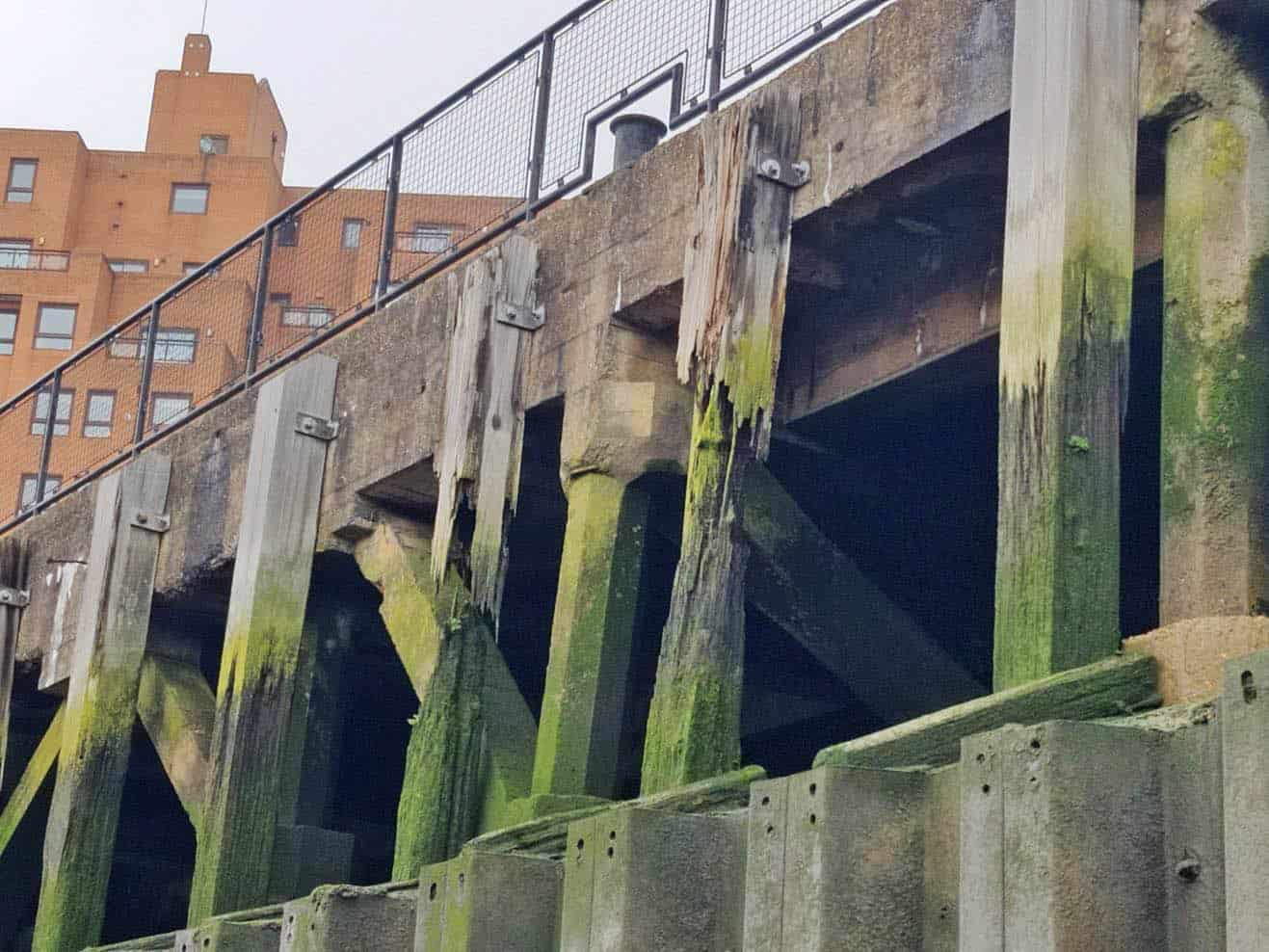
In February the PLA (Port of London Authority) wrote a severely worded warning to Free Trade Wharf. “There is the potential for a serious navigational incident to occur should items enter the River.” The fear was of structural collapse.
Thames Path affected
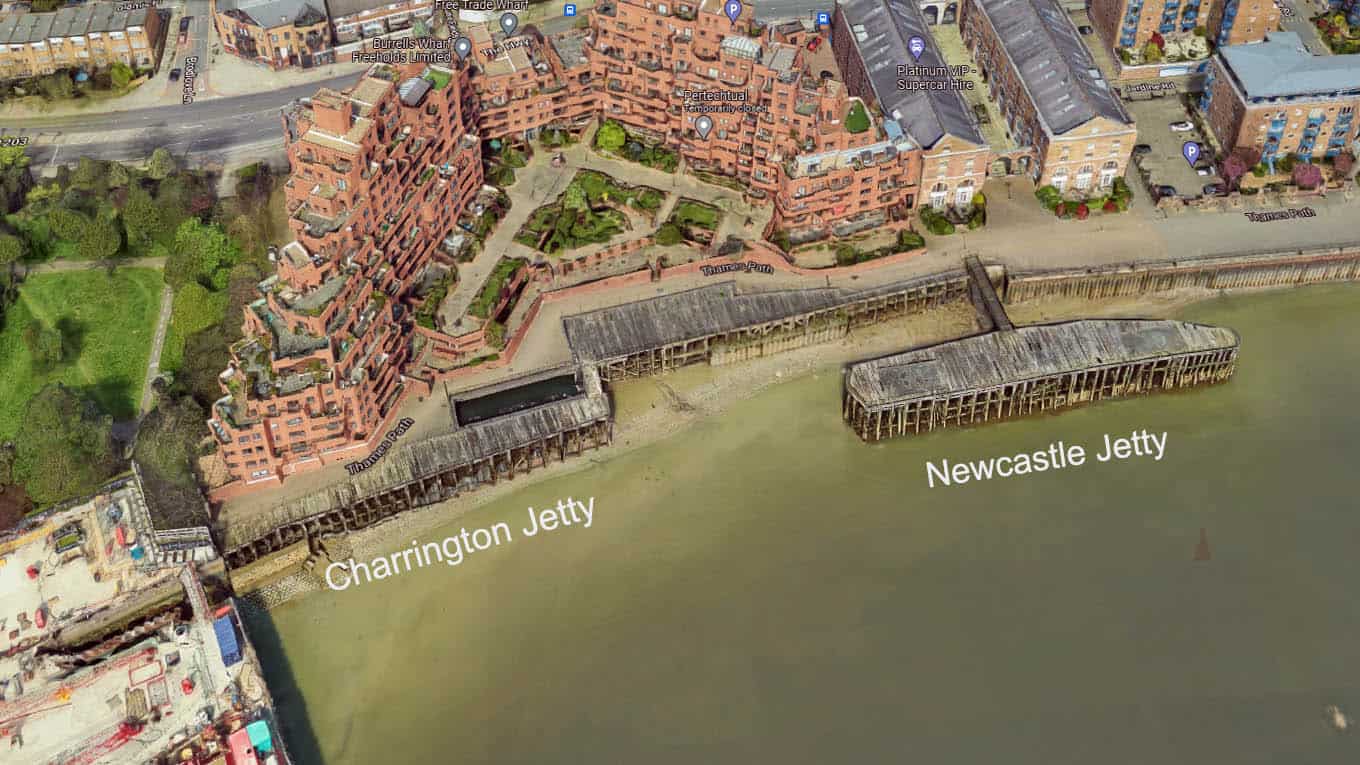
Charrington Jetty is the section that widens the Thames Path as it emerges from King Edwards Path. The removal will narrow the path to about two metres.
The larger and more spectacular Newcastle Jetty is also affected by the application, but they only want to demolish the bridge that connects it to the land. The survey did not recommend destroying the bridge, so its a puzzle why this was included. Without the bridge there will be no public access, and and with time perhaps no one will object to the eventual demise of the entire structure. Or maybe it’s just cheaper to tear it down?
HISTORIC MARITIME STRUCTURES
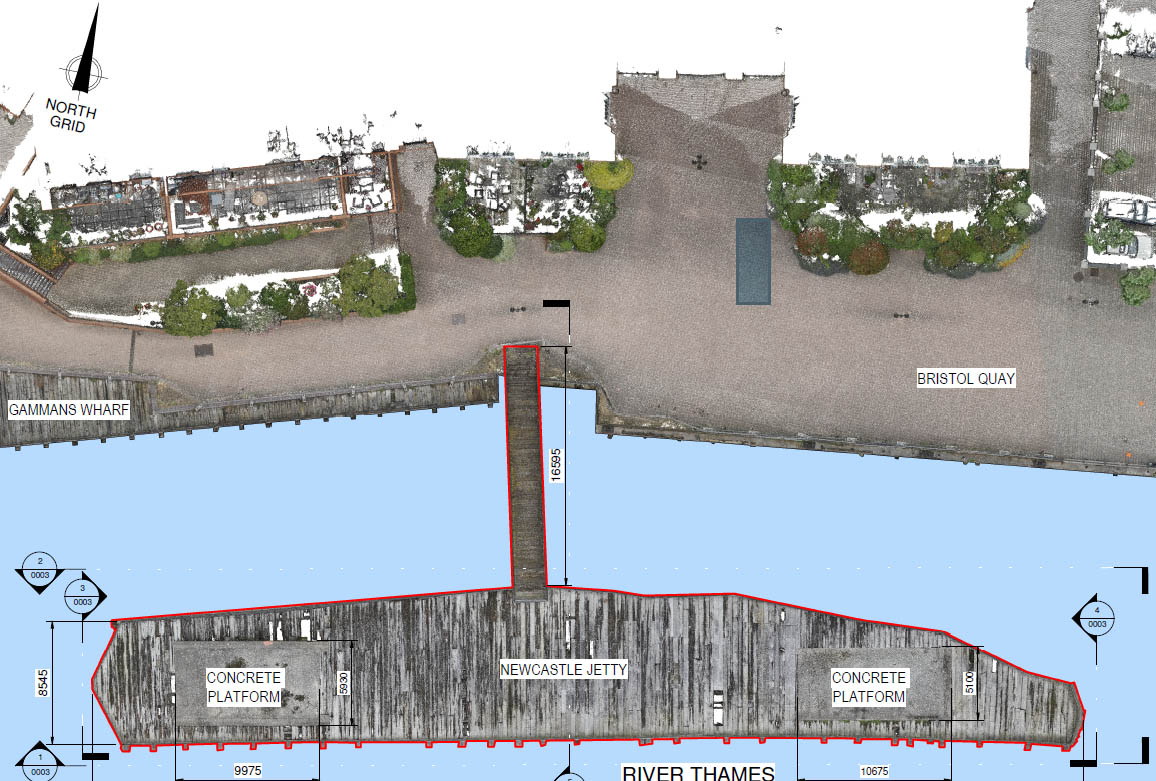
There are only a few historic jetties the Thames Path, all in East London. One in Limehouse, one in Blackwall, and one in Greenwich near the Dome. If they were all allowed to deteriorate to the point of demolition, then this would be a considerable loss of historic maritime architecture.
Regeneration of the Thames Path
These historic jetties appear to be fairly unloved, presumably due to a lack of a purpose. The question is what modern use could we make of them?
If Newcastle Jetty was expanded, it could find a use. Brighton has a pier, so why can’t the Thames have a similar attraction. Or perhaps a café with tables and umbrellas. With a ship moored, there could be an on-board restaurant using the jetty as a terrace for summer?
Is Port of London Authority responsible?
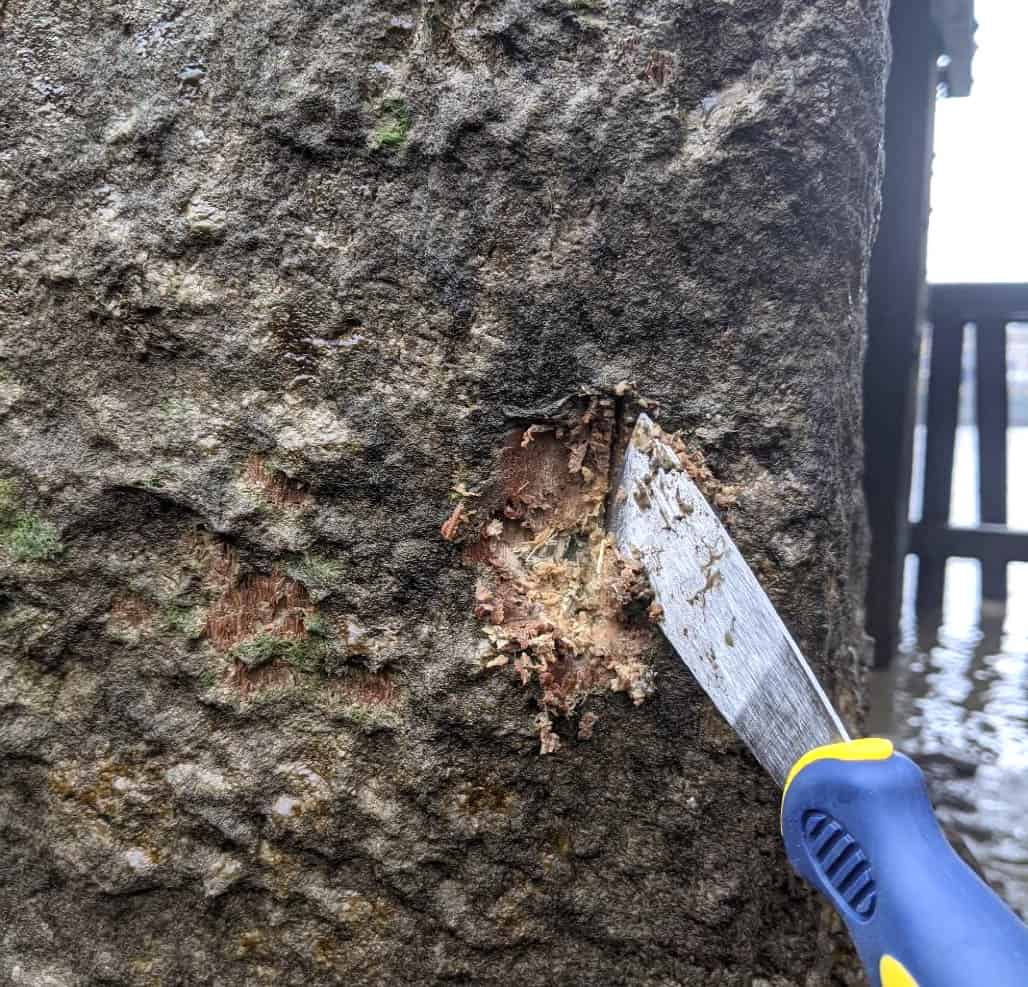
There is a real question as to how were these structures were allowed to deteriorate to such a condition? Perhaps the PLA can tell us whether they have enforced maintenance on this jetty? If it’s not in their mandate, then whose is it?
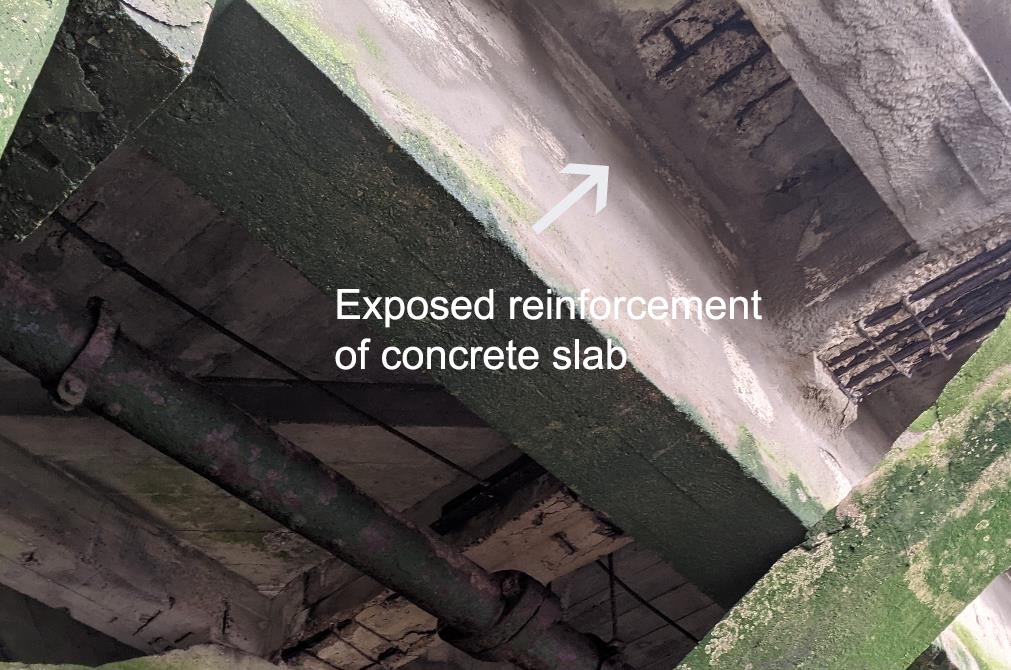
It takes a long period of decline for a structure as sturdy as this to reach the point of collapse. Why did they wait until the concrete of the structure was crumbling sufficiently to expose the reinforcement bars within? Why were they not concerned when the timbers were rotting beyond repair? Must the other historic jetties be listed in order to protect them?
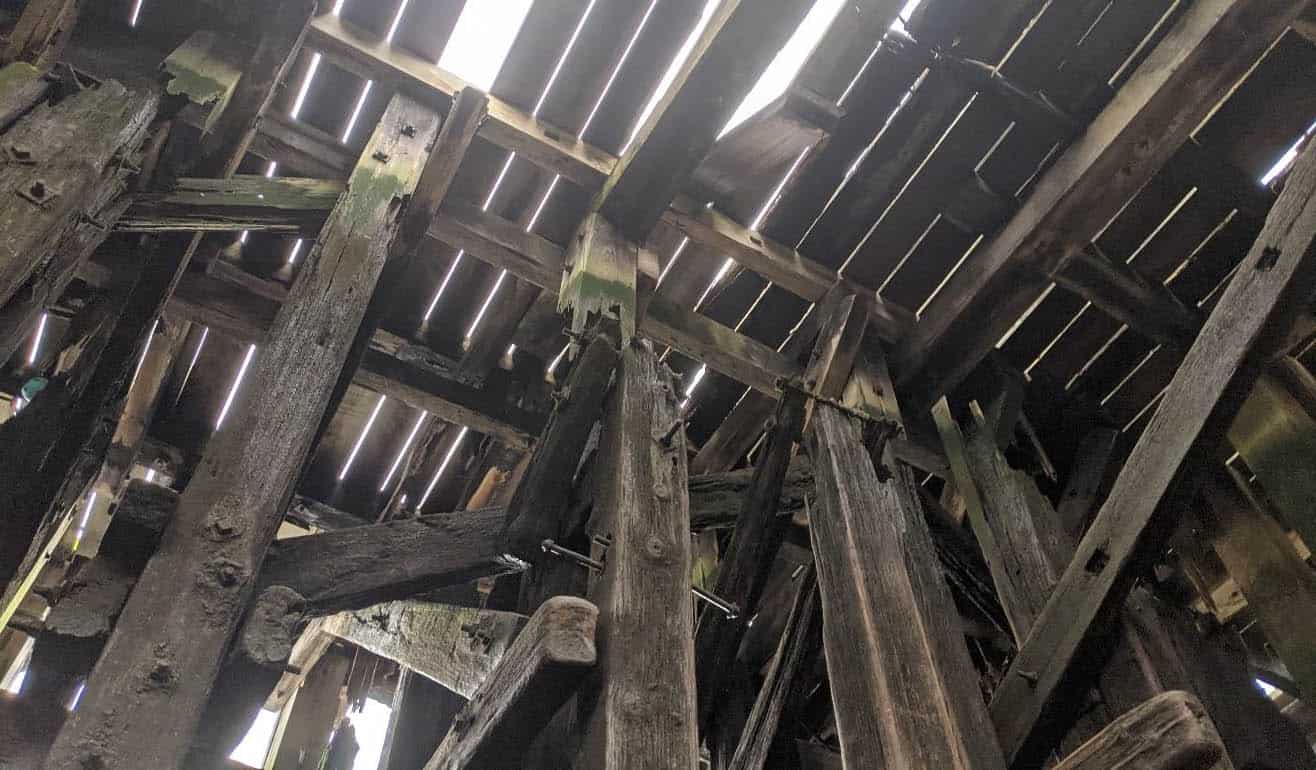
The planning deadline for objections has now passed, but Reclaim Our River filed an objection to the loss width of the Thames Path, and also an objection to the loss of the bridge to Newcastle Jetty.
No love will ever be found for these historic structures if the public are denied access.
UPDATE
PLA don’t inspect or regulate structures on the river. They wait until boatman complain of dangers. As many freeholders lack understanding of their responsibilities, I will press PLA to make a study of all structures on the river and to enquire as to their maintenance.
200 residents are liable at Free Trade Wharf.
The reason the Jetty is important is because it allows us to read the history of the river. It may not be pretty but it is imposing and atmospheric.
As for a use, our secretary Amanda Day suggests we seek a grant for a flower garden.

